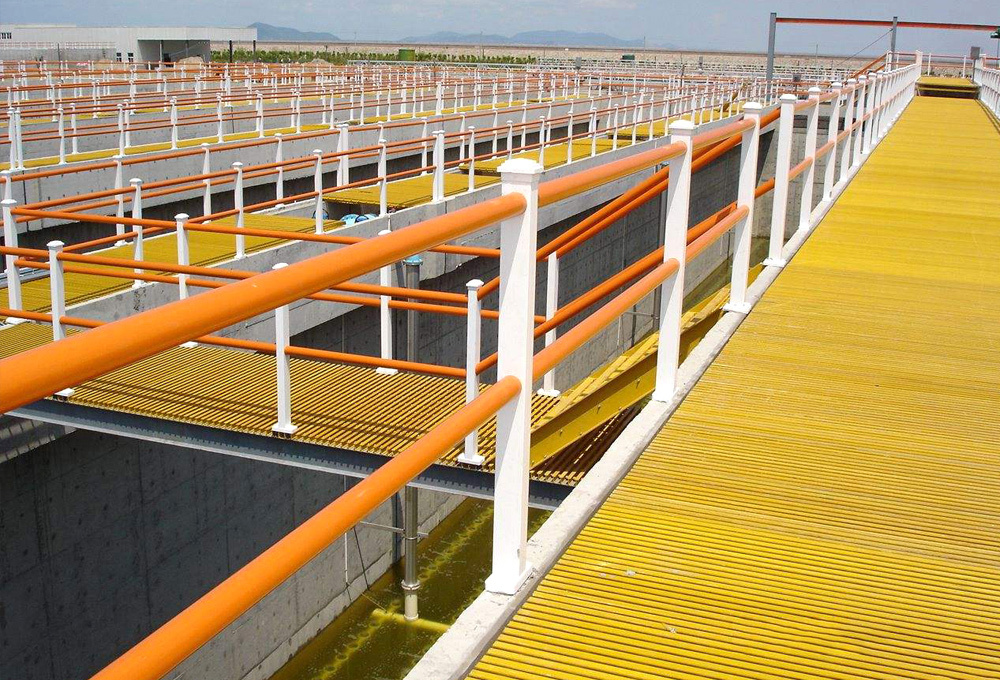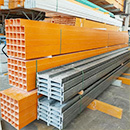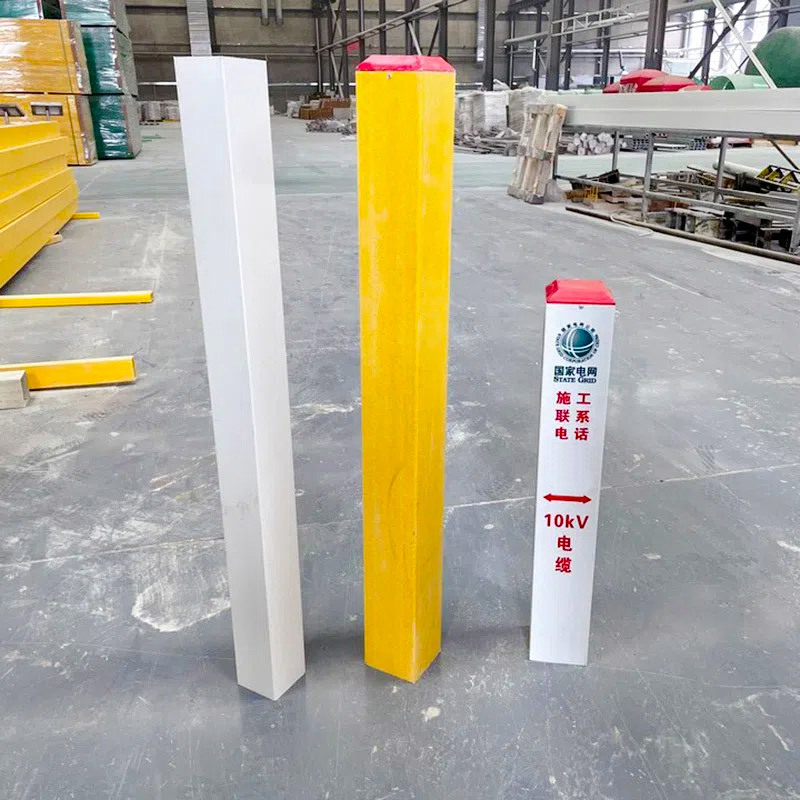Top 5 Compelling Reasons to Invest in FRP Composite Handrails for Your Construction Projects
Aug 11,2025
Top 5 Compelling Reasons to Invest in FRP Composite Handrails for Your Construction Projects
Table of Contents
Introduction to FRP Composite Handrails
What Are FRP Composite Handrails?
Benefits of Investing in FRP Composite Handrails
1. Exceptional Durability
2. Low Maintenance Requirements
3. Enhanced Safety Features
4. Design

Top 5 Compelling Reasons to Invest in FRP Composite Handrails for Your Construction Projects
Table of Contents
- Introduction to FRP Composite Handrails
- What Are FRP Composite Handrails?
- Benefits of Investing in FRP Composite Handrails
- 1. Exceptional Durability
- 2. Low Maintenance Requirements
- 3. Enhanced Safety Features
- 4. Design Flexibility and Aesthetic Appeal
- 5. Eco-Friendly Choice
- Cost-Effectiveness of FRP Composite Handrails
- Applications of FRP Composite Handrails in Construction
- Conclusion: Why FRP Composite Handrails Are Worth Your Investment
- Frequently Asked Questions (FAQs)
Introduction to FRP Composite Handrails
In the realm of construction and architectural design, the choice of materials plays a pivotal role in ensuring both **safety** and **aesthetics**. One material that has gained significant traction in recent years is **Fiber Reinforced Polymer (FRP)**. Among its many applications, FRP composite handrails stand out as a superior choice, offering a combination of strength, durability, and adaptability. In this article, we will delve into the top five reasons why investing in FRP composite handrails is a decision that can enhance your construction projects.
What Are FRP Composite Handrails?
FRP composite handrails are made from a polymer matrix reinforced with fibers, typically glass or carbon. This combination results in a lightweight yet incredibly strong material that can outperform traditional materials such as wood or metal. The **composite** aspect means that different materials are combined to achieve superior properties, making FRP handrails particularly attractive for various construction needs.
Benefits of Investing in FRP Composite Handrails
1. Exceptional Durability
One of the most significant advantages of FRP composite handrails is their **exceptional durability**. These handrails are resistant to corrosion, rust, and degradation caused by environmental factors. Unlike traditional materials, FRP does not absorb moisture, making it an ideal choice for both indoor and outdoor applications. Whether exposed to rain, snow, or high humidity, FRP handrails maintain their structural integrity and appearance over time.
2. Low Maintenance Requirements
Investing in FRP composite handrails means opting for a **low-maintenance** solution. Unlike wooden handrails that may require regular painting, sealing, or replacement due to wear and tear, FRP handrails simply need occasional cleaning to remove dirt and debris. This quality not only saves time but also reduces long-term costs associated with upkeep and repairs.
3. Enhanced Safety Features
Safety is paramount in any construction project, and FRP composite handrails excel in this area. They are designed to provide excellent grip and stability, which is critical in environments where slips or falls can occur. Additionally, the material is non-conductive, making it a safe option for projects in areas where electrical hazards are a concern. By investing in FRP handrails, you are prioritizing the safety of your structures and the people using them.
4. Design Flexibility and Aesthetic Appeal
Another compelling reason to consider FRP composite handrails is their **design flexibility**. These handrails can be manufactured in a variety of colors, textures, and shapes, allowing for customization that meets the specific aesthetic needs of any project. Whether you are aiming for a sleek modern look or a more traditional style, FRP handrails can be tailored to fit the vision of your project seamlessly, adding to its overall appeal.
5. Eco-Friendly Choice
Sustainability is becoming increasingly important in construction, and FRP composite handrails are an **eco-friendly choice**. The production process for FRP materials typically has a lower environmental impact compared to traditional materials. Moreover, FRP handrails are often made from recycled materials, further enhancing their sustainability appeal. By choosing FRP, you are contributing to environmental conservation while also meeting modern building regulations concerning eco-friendliness.
Cost-Effectiveness of FRP Composite Handrails
Cost is always a crucial factor when investing in construction materials. While the initial purchase price of FRP composite handrails may be higher than that of traditional materials, their long-term cost-effectiveness is undeniable. The **reduced maintenance** expenses, longevity, and safety benefits translate into significant savings over time. When you consider the potential costs of accidents due to inferior materials or the need for frequent replacements, the investment in FRP handrails becomes even more justifiable.
Applications of FRP Composite Handrails in Construction
FRP composite handrails can be utilized in a variety of settings, showcasing their versatility. Some common applications include:
- **Industrial Facilities**: Their resistance to chemicals makes FRP handrails ideal for factories and warehouses.
- **Commercial Buildings**: The aesthetic flexibility allows for integration into retail spaces and offices.
- **Public Infrastructure**: FRP handrails are suitable for parks, bridges, and walkways where safety and durability are critical.
- **Residential Projects**: Homeowners are increasingly choosing FRP for decks and stairways due to their blend of style and strength.
Conclusion: Why FRP Composite Handrails Are Worth Your Investment
In conclusion, investing in **FRP composite handrails** is a strategic decision that offers numerous advantages. From their durability and low maintenance to enhanced safety features and eco-friendliness, FRP handrails present a comprehensive solution for modern construction needs. As the industry continues to evolve, opting for materials that provide long-term value and sustainability will become increasingly essential. By choosing FRP composite handrails, you are not only ensuring the safety and satisfaction of users but also contributing to the future of construction.
Frequently Asked Questions (FAQs)
1. What makes FRP composite handrails superior to traditional materials?
FRP composite handrails are more durable, require less maintenance, and offer better safety features compared to traditional materials like wood or metal.
2. Are FRP handrails customizable?
Yes, FRP handrails can be customized in various colors, textures, and designs to fit the aesthetic requirements of any project.
3. How do FRP handrails perform in outdoor conditions?
FRP handrails are highly resistant to environmental factors like moisture, UV rays, and temperature fluctuations, making them ideal for outdoor use.
4. Can FRP handrails be used in residential projects?
Absolutely! FRP handrails are increasingly popular in residential settings for decks, stairways, and other applications due to their strength and design versatility.
5. What is the long-term cost benefit of using FRP handrails?
While the initial cost may be higher, the long-term savings in maintenance, repairs, and safety-related expenses make FRP handrails a cost-effective choice.
Previous:




